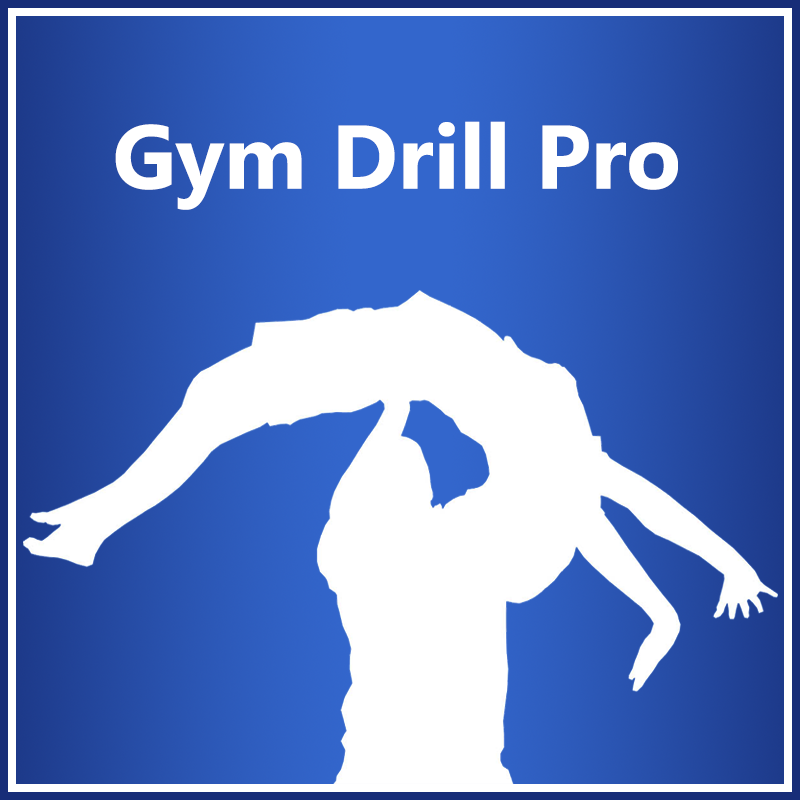

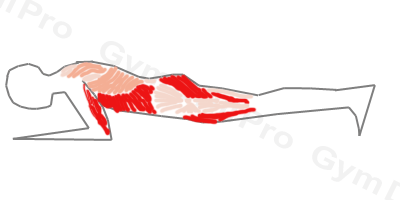
The core skills improve the ability to produce motion through concentric power, resist motion through isometric power, and absorb or decelerate motion through eccentric power. Each of these qualities is important in gymnastics. Not only does the chapter contain a balance of dynamic and static, or isometric, exercises, it also varies exercises in terms of planes and directions of movement. For example, planks skills are well suited for transferring to lateral movement, for transferring to forward and backward movement, for transferring to rotary movement. The chapter allows developing power, strength, and strength endurance in addition to well-developed abs. The athlete should execute correctly the exercise technique for the different areas of the core. The hips and thoracic spine (upper back) should be mobile and move efficiently; however, the spinal motion should be limited in the lumbar region. For example, when performing crunches and side crunches, the upper back should move the most while the lower back, or lumbar spine, moves the least. It is also essential to maintain good posture during core stability.
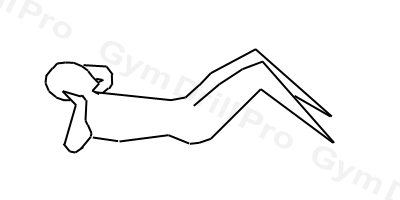
Lie back with knees bent, feet on the floor, and hands at the ears. Hold the head and neck in neutral position, not flexed or twisted. Flex the spine to 30 degrees of trunk flexion with most of the motion occurring in the thoracic spine, keeping the head and neck in proper posture. Hold at the top briefly and then lower the trunk slowly under control.
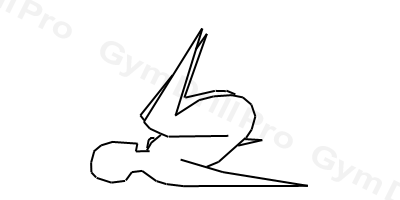
While the standard crunch targets the upper rectus abdominals a bit better then lower rectus abdominals, if done correctly the reverse crunch will recruit more lower belly muscles and oblique activity because of the posterior pelvic tilting involved in the variation. Start with the hips flexed at 90 degrees and knees bent. Pull the knees toward the head and raise the buttocks off the ground.
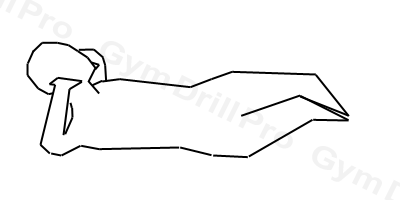
The side crunch variation is performed by shifting onto your side with the hips flexed and raising the trunk to about 30 degrees of lateral trunk flexion. Performing the crunch in this manner targets obliques.
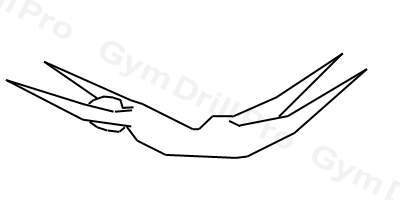
Lie prone on the ground with the arms stretched forward in front of the body, palms down, and the knees slightly bent and shoulders width apart. Simultaneously raise the torso of the ground arching at the hips and just the spine. Target the glutes and hamstrings in addition to the spinal erectors. Hold the top position briefly and then lower the body to starting position.
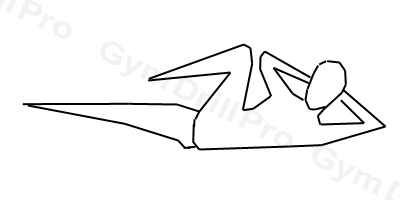
Lie back with hips flexed in the air 90 degrees. With the hands at the ears, flex and rotate the upper spine by raising the torso off the ground about 30 degrees and twisting while flexing the opposite hip until the elbow and opposite knee meet each other. Reverse the movement and twist to the opposite side as if riding a bicycle.
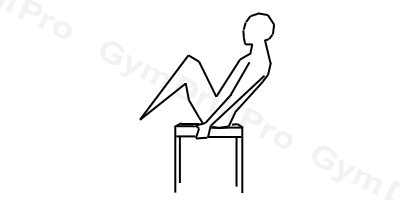
While seated, lean back and grab the seat of the chair, keeping the feet ob the floor, chest up, and head and neck in a neutral position. Keeping the knees bent, simultaneously move the trunk forward and the legs upward so the trunk and tighs move forward each other. Lower the torso and feet to starting position.
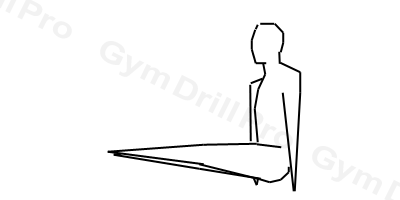
The L-sit is a challenging variation that involves holding an isometric, 90 degree, hip-flexed position while the entire body hovers over the ground. This advanced variation can be attempted after you are gained sufficient core strength and hamstring flexibility through another exercise. You can facilitate the skill if you place books, paralletes, or weights next to you, and put your palms on them. Other option is doing the skill of raising the wrists on fingers.
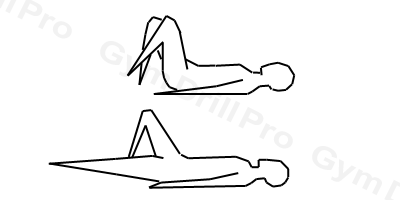
Lie back. Bent the knees, plant one foot on the ground, and lift the other in the air, keeping the hip and knee flexed at 90 degrees. Lower the bent leg toward the ground. As it approaches the ground, straighten the knee as you continue lowering the leg toward the ground, stopping just of contact. Keep your lumbar spine in a neutral position. Reverse the movement and return to the starting position.
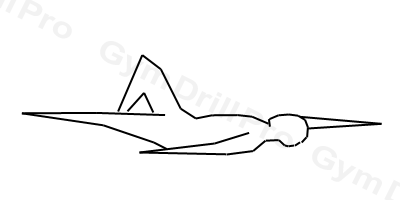
The dead bug skill is a more challenging variation that involves diagonal arm and leg movements. Start in a supine position with the hips, knees, and shoulders flexed in 90 degrees. Simultaneously lower on the leg and the opposite arm toward the floor while keeping the lower back in a neutral position. This is much harder than the previous one.
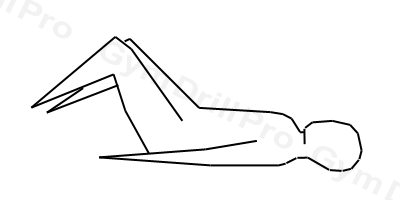
Lie back, palms down and neck in a neutral position, with hips and knees bent at 90 degrees. Keeping knees bent, slowly lower both feet to the floor through eccentric hip extension. Do not let the lower back flatten out. Reverse the movement to return to starting positon.
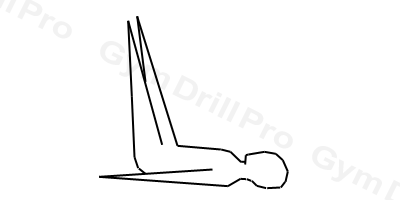
The skill is an advanced variation of the previous one. Most people perform the movement and lower the legs slowly and under control.
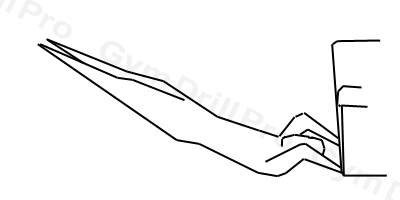
The dragon flag id s highly advanced variation. Make sure you are able to perform a simpler movement before attempting this skill. Lie back and grab hold of an object behind you suck as a pole or bottom of a coach. Elevate your entire body about your upper shoulders, keeping the body in a straight line and maintaining good posture and core construction.
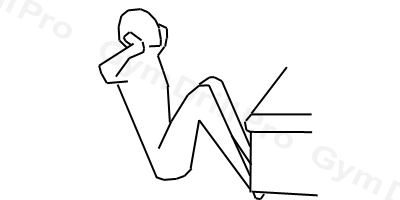
Lie back with the hips bent 45 degrees and knees bent 90 degrees. With the hands at the ears, flex the hips and upper back while moving only slightly in the lumbar spine. Return to starting position.
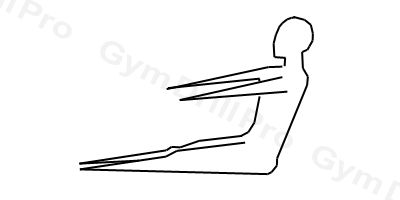
The skill is a variation of the previous one and requires hamstring flexibility. Use the hip flexors to pull your body up while keeping the chest tall to prevent excessive routing, of the lower back.
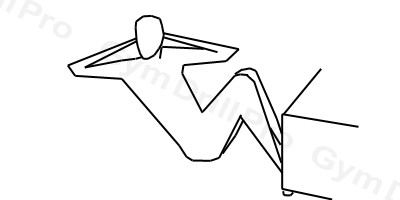
The twisting sit-up is another classic movement, but just like the other sit-up variations, make sure you are performing the skill correctly. As you rise, keep the chest up to prevent excessive rounding. Do not overrotate. Bring the opposite elbow towards the knee at the top of the movement.
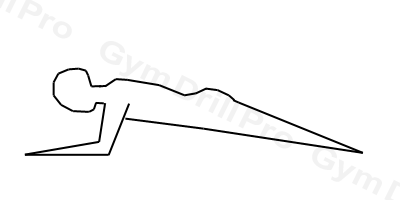
From front support on the ground bend the arms and place the elbows on the floor. Only the feet and forearms touching the ground. Keeping the body in a straight line with the elbows directly beneath the shoulders, the hands flat on the floor or clasped, and the head looking down. Forcefully contract the quads and glutes. Hold for time. Depending on your fith=ness level, hold the position for up to 3 minutes.
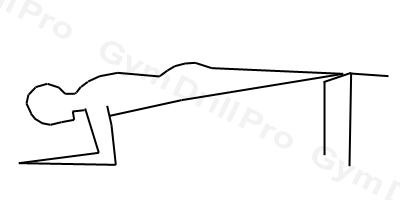
It is possible to make the static hold more challenging by elevating the feet onto a weight bench, chair or small table. Just do not elevate the body to high. Ideally, you want to be parallel to the ground for a maximum challenge.
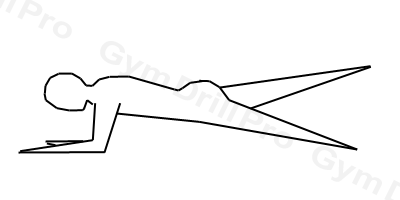
Get into a standard plank position. While keeping the body stable, lift an arm into the air and hold for a s1 second count. Return to straight position then raise the other arm into the air while keeping the body stable. Return to starting position then raise one leg. Return to starting position and raise the other leg. Continue to rotate limbs in this manner for the entire set.
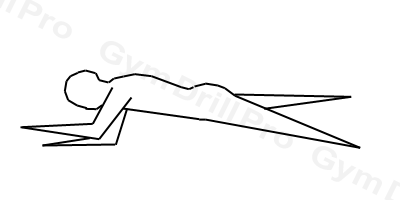
When the rotating 3 point plank is mastered, it is possible to make the skill even more difficult be performing a rotating 2 point plank. Simply raise one arm and the opposite leg at the same time while keeping the body stable and preventing motion at the pelvis and spine.
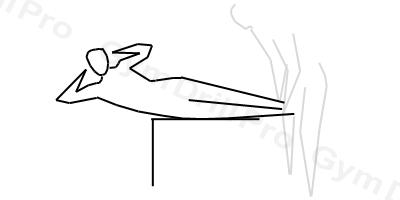
Begin with a spotter holding your feet, your lower body draped over a bench, small table, coach, or pommel horse, and your upper body suspended in the air with the hands at the ears and legs straight. Lower the torso toward the floor, limiting the bending in the lower spine while receiving a stretch in the upper hips. Avoid rotating during the execution. Raise the torso with a strong contraction in the gluteus medius and obliques.
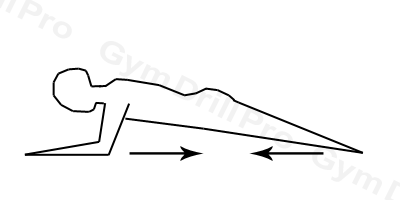
Get into standard plank position on the forearms and toes. Squeeze the glutes as hard as possible at to posteriorly tilt (tuck under) the pelvis. Hold the pelvic tuck throughout the duration of the set. Try to drive the elbows to the feet and the feet to the elbows as if trying to pike upward but keep the body in good alignment.
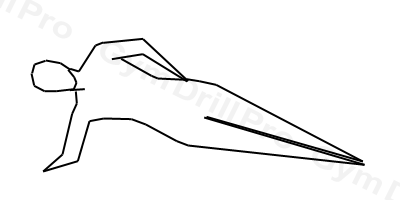
From a side pillar or bridge by supporting your body in a side-lying position with just one foot and one forearm touching the ground. Stack the legs and place the hand of the upper arm on the hip. Keep the body in a straight line from head to foot with a neutral head and neck position. Squeeze the glutes and keep the forearm of the lower arm pointed straight ahead. Hold for time. Depending on your exercise level, hold for 15 to 60 seconds.
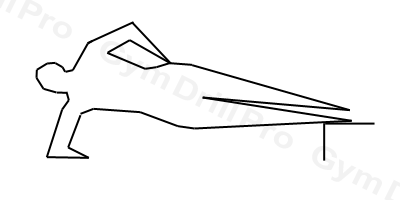
The feet-elevated side plank is an advanced variation of the side plank. Elevate the feet onto a weight bench, small chair, box, or sturdy table. Ideally, you want the body to be parallel to the floor. Make the exercise even more challenging by combining a hip abduction (like a side lying hip raise) with the top leg or an external hip rotation (like a side-lying clams) while holding the position.
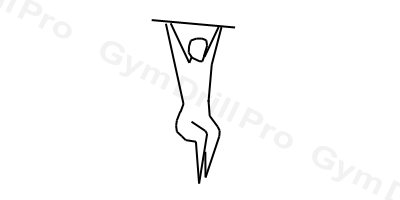
Hang from a chin-up bar or sturdy rafter with palms forward and hands about shoulder-width apart, keeping the legs straight. Raise the legs by flexing at the hips until the hips and knees are at gO-degree angles. Lower the legs to starting position.
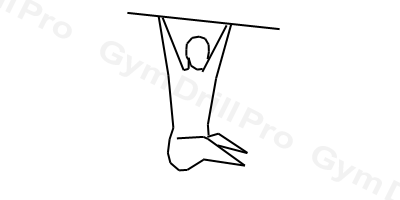
The straight-leg hanging leg raise is an advanced variation that requires excellent hip flexor strength and hamstring flexibility. The same rules apply: keep the lumbar spine stable while moving solely at the hips.
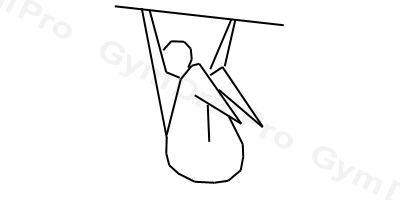
The hanging leg raise with reverse crunch combines hip flexion, posterior pelvic tilt, and lumbar flexion to work the hip flexors and abdominals. Raise the knees. When you reach 90 degrees, keep raising by tilting the pelvis back and flexing the spine a bit, which will allow you to bring the knees all the way up toward your shoulders.
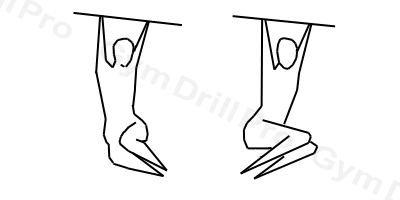
Hang from a chin-up bar or sturdy rafter with knees bent and hands shoulder-width apart, palms facing forward. Raise the knees by flexing at the hips. At the same time, pull your knees to one side by laterally flexing the spine. Raise the knees to slightly over 90 degrees relative to the ground. Lower the legs to starting position then alternate to the other side.
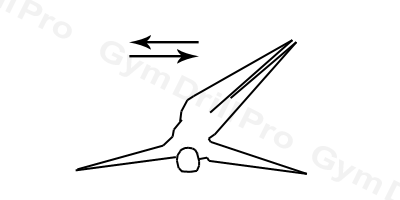
The windshield wiper is an extremely advanced exercise. Don't try it until you have mastered more basic core movement patterns. To perform this movement, raise the legs toward the shoulders and then rotate the legs from side to side, keeping the core tight and twisting mostly with the upper back, not the lower back. Control the motion and limit the rotational range of motion to spare the spine.
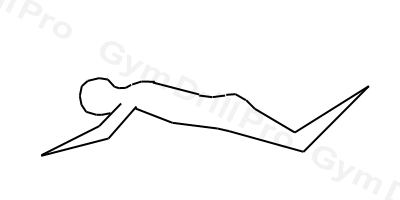
Assume a kneeling position with both hands on paper plates. You may also use commercially available sliding exercise discs or, on a slick floor, small hand towels. Squeeze the glutes and keep the head and neck in a neutral position. Lower your body under control by extending the hips and flexing the arms until your body approaches the floor. Keep the glutes contracted forcefully. Rise back to the starting position.
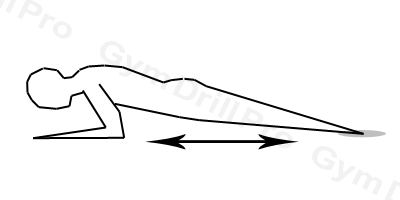
Form a pillar by resting your body on the ground and propping yourself on your elbows and feet. The feet are on paper plates. You also can use commercially available sliding exercise discs or towels on a slick Floor. Keep your glutes and quadriceps contracted and your head in a neutral position so your body forms a straight line. Rock the body forward and backward through shoulder flexion and extension. The feet will slide with the forearms serving as a pivot point.
Integral part of gymnastics coaching process are skill drills. They help gymnasts to learn easier and technically correct. With GYM DRILL PRO you will find variety of ideas for the most the basic gymnastics skills. There are plenty of images with skill drill progressions. It is intended to support explicitly the qualified coaches in their daily coaching business. DO NOT practice without the guidance of proper professionals.